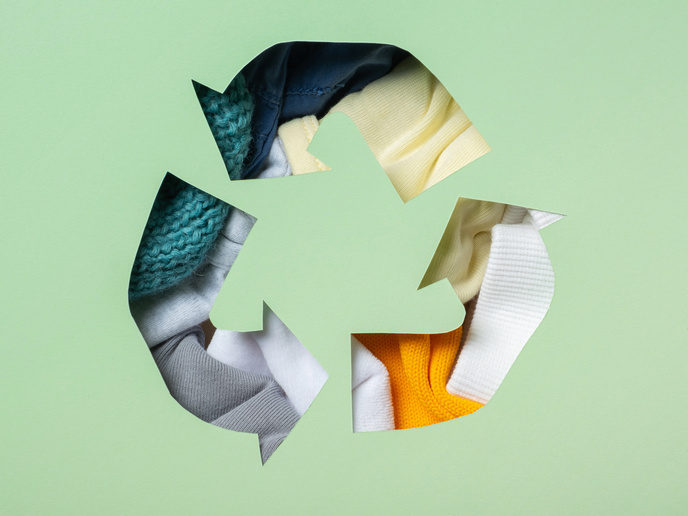Developing a master plan for textile circularity
The EU-funded tExtended project is launching the second phase of its plan to optimise textile flows and ensure materials retain their value in a safe and sustainable way. Its innovations are helping to meet the need for efficient solutions to the growing global problem of textile waste. Up to 40 % of fabric used in factories is left over or becomes waste. Even more concerning, less than 1 % of textile waste worldwide is being recycled for use in new textiles, and a mere 20 % of used textiles in Europe are downcycled for use as industry wipes or other applications.
Defining the path to textile circularity
To tackle these challenges, tExtended is developing a blueprint, a knowledge-based master plan for the implementation of a circular textile ecosystem involving effective textile recovery, extended reuse of textile products, waste valorisation and efficient material recycling of end-of-life textiles. Following 2 years of research, the project is entering the second phase of work and progressing further in the development of its Conceptual Framework, a knowledge-based solution targeting quality retention. It focuses on textile waste classification based on identified material quality and properties, requirements of intended industrial end-use, economical aspects, environmental impacts of textile waste valorisation and recycling processes. Plans are underway to test the Conceptual Framework in an industrial-urban symbiosis collaborative real-scale demonstrator. The aim is to demonstrate its potential to reduce textile waste by 80 % and examine the demonstrator’s replication potential in different regions. “We look forward to bringing our work about designing a blueprint to the next step. The textile sector is still lacking technologies and infrastructures that can effectively support the shift to a circular model, and we believe that our solutions will strengthen competitiveness and resilience through sustainability and digitalization, while also generating new business,” remarks Pirjo Heikkilä, senior scientist at tExtended project coordinator VTT Technical Research Centre of Finland, in a recent press release. tExtended will soon test its solutions at a Europe-wide level. It also plans to carry out localised regional studies to evaluate the solutions’ replication potential in different regions across Europe.
Identifying barriers
Research conducted as part of the project has also led to the identification of six different barriers for circular business models in the textile sector. As described in a recent news item, these include economic barriers such the high cost of novel circular solutions and technological barriers such as the lack of relevant technological knowledge or skills and the dearth of reliable technologies on the market. Unclear legislation is another barrier to circularity, as are customer-related barriers such as the lack of awareness by customers of the quality and benefits of circular products. A fifth type of barrier to circularity is that it requires a lot more resources and new competencies from textile companies, whose capacity is currently limited. The final barrier identified was cultural in nature, since the complexity of circular business requires a change in the mindset of personnel who are generally resistant to change. The tExtended (Knowledge Based Framework for Extended Textile Circulation) study on barriers was conducted to provide textile sector companies with insight that will guide them in developing ways to overcome these barriers in the future. For more information, please see: tExtended project website
Keywords
tExtended, textile, recycling, circular, waste, barrier



